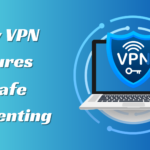4 Key Elements of Successful Customer Experience Management Strategies
A positive customer experience is an invaluable resource for any business. It can boost brand preference, increase revenue and reduce costs.
So what is customer experience management? Customer experience management (CEM), often known as CXM or CXM, is a set of marketing tactics and technologies emphasizing client involvement, satisfaction, and experience. Achieving a great customer experience requires a lot of work and commitment from every team that touches customers. But four key elements can help you make a success out of your CX management strategy.
Top 4 strategies of Successful Customer Experience Management
Listen to Your Customers
If you want to make sure your customers stay happy and return to your business repeatedly, paying attention to them is essential. That includes focusing on how they communicate with you, whether through phone calls or chats, and even their body language.
Listening to your customers is the first step in building strong bonds. It allows you to understand their needs better, suggests improvements to your products and services, and creates a more personalized experience for them.
Many businesses are so focused on selling a product or service that they must remember to listen to what their customers say. This can lead to missed opportunities, like when customers need help getting what they want from your product or service.
Similarly, listening to your customers when they have problems is important. By doing so, you’ll be able to address their issues more effectively and prevent customer churn.
Another way to listen to your customers is by adjusting your business’s processes to fit their needs. By personalizing your experience and offering solutions that meet their needs, you’ll be able to improve your sales, increase customer loyalty, and boost your revenue.
It’s also a good idea to use tools that can help you collect feedback from your customers so you can see where they are experiencing friction and how they feel about it. You can then use this information to correct any problems causing churn. For example, one of the biggest reasons customers leave a business is long waiting times. By improving your wait times using a digital queue management tool, you can improve the overall customer experience and reduce churn.
Develop a Customer Journey Map
One of the key elements of successful customer experience management strategies is developing a customer journey map. These maps can help businesses develop more effective marketing campaigns, increase sales and build stronger customer relationships.
A customer journey map is a graphic diagram that shows customers’ interactions with your brand or product at a given stage of the buying process. This can include the entire customer’s journey or specific aspects, such as a single buying process step.
You’ll want to brainstorm a few scenarios to develop a customer journey map. These scenarios can be real (for existing products or services) or anticipated — for products still in the design phase.
Having a map that shows you what your customers are doing throughout their journey can help you understand where they are struggling the most and where you need to improve. It can also help you know when your customers should be happier or more satisfied.
Finally, analyzing your customer journey map and making changes based on the results is important. This can help you understand where your customers aren’t enjoying their experiences or where they need more support.
Create a Customer-Centric Culture
Creating a customer-centric culture is essential to building a winning customer experience management strategy. A company that puts customers at the center of everything it does will have a much better chance of earning loyalty and increasing revenue.
Having a customer-centric culture means putting customers first, from the moment they enter your sales funnel to when they leave your business. This means ensuring that your employees understand their role in helping customers and that every decision they make focuses on helping them.
A strong customer-centric culture is also a great way to foster innovation. It allows employees to learn from and adapt to their customer’s needs and helps them focus on delivering exceptional experiences.
Employees who care about your customers will want to continue working for you in the future, so you must create a culture where they can thrive and feel fulfilled by their work. It is not enough to tell them they should care about customers; you must also provide the tools and training they need.
If your employees are unhappy, they won’t be able to deliver outstanding service to your customers. Creating a company culture that supports customer-centricity starts with hiring the right people.
Create a Personalized Experience
Personalized customer experiences can help you increase engagement, sales, and loyalty. They can also reduce your risk of losing customers. Creating a personalized experience can be as simple as adding a customer’s name to an email subject line or as complex as offering a branded content experience across a multi-threaded sequence of user interactions. The best personalization efforts are about being relevant, delivering value, and building strong customer relationships.
A company can easily deliver a personalized experience by identifying each customer’s personality and unique needs and contacting an employee who can help them achieve their goals. They can also build a relationship with their customers by responding to and acting on their feedback.


















